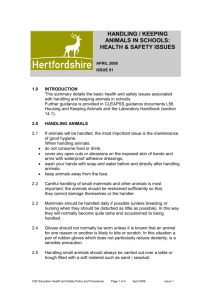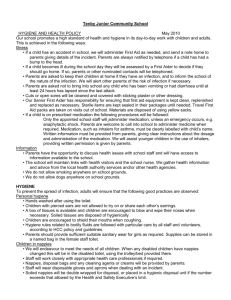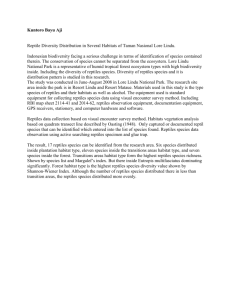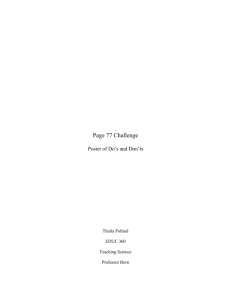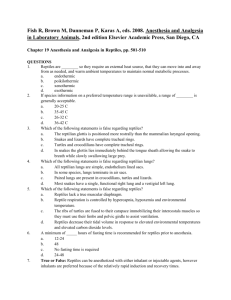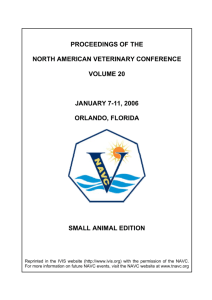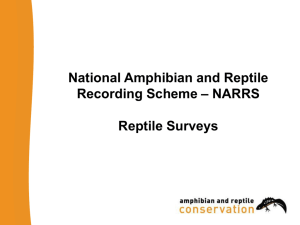Handling and Keeping Animals in School (W)
advertisement
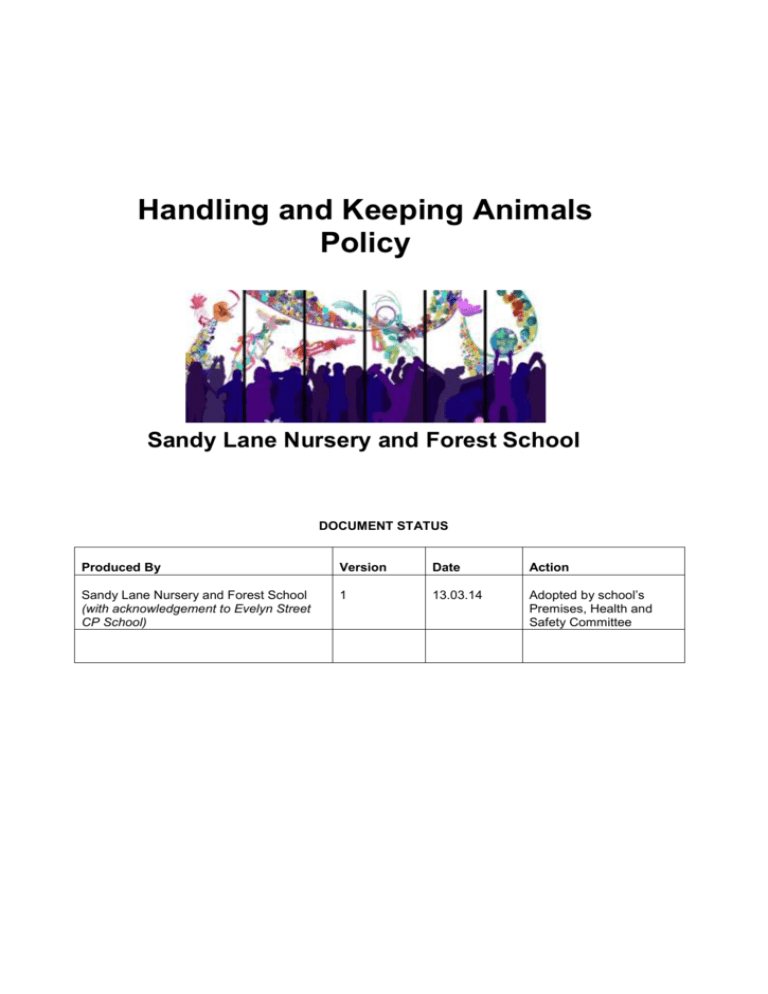
Handling and Keeping Animals Policy Sandy Lane Nursery and Forest School DOCUMENT STATUS Produced By Version Date Action Sandy Lane Nursery and Forest School (with acknowledgement to Evelyn Street CP School) 1 13.03.14 Adopted by school’s Premises, Health and Safety Committee This page is intentionally blank Handling and Keeping Animals in School Rationale This summary details the basic health and safety issues associated with handling and keeping animals in school. Further guidance is provided in CLEAPSS guidance documents L56 Housing and Keeping Animals and the Laboratory Handbook (section 14.1). Purpose To provide an enrichment experience for children to extend this learning in a real life situation To provide children who do not come into contact with animals a learning experience To provide a safe environment where children can handle and care for animals To support the development of pupils social emotional intelligence To develop empathy, sensitivity, humility and selfless care of others and living things To ensure appropriate health and safety measures and appropriate risk assessments have been completed and adhered to Broad Guidelines for Handling Animals If animals will be handled, the most important issue is the maintenance of good hygiene. When handling animals: o Do not consume food or drink o Cover any open cuts or abrasions on the exposed skin of hands and arms with waterproof adhesive dressings o Wash your hands with soap and water before and directly after handling animals o Keep animals away from the face 1. Diseases, parasites and allergies The likelihood of disease being passed on from pet animals is low. However allergic reactions to mammals, birds and few other animals cannot be discounted. These might result from handling the animals or just from being near them, and be detected by the development of skin rashes, irritation to the eyes and nose or breathing difficulties Hand washing soon after handling animals will help. Teachers should watch for the development of allergic reactions in pupils who come into contact with the animals Salmonella bacteria may be carried by reptiles; good hygiene is again required, especially if aquatic reptiles, such as terrapins, are kept. Good general hygiene and hand washing are essential for risk reduction Children under five should not have contact with such reptiles or the environment in which the reptiles live or exercise 2. Animal Suppliers The majority of animals available through reputable suppliers present no hazards that good hygiene procedures cannot address 3. Animal Health If animals are not kept in scrupulously clean conditions, or come into contact with other animals from dubious sources, it will no longer be possible to guarantee that the animals will remain in a disease-free condition 4. Cleaning and Hygiene: This is clearly important, both for the health of the health of the animals and for those people looking after them. Hands should be washed before, and of course, after cleaning cages, tanks etc. rubber or plastic gloves should preferably be worn After removing soiled litter material, cages should be scrubbed with hot water and liquid detergent 5. Soiled Litter Disposal Soiled litter should ideally be incinerated; more conveniently it could be sealed in strong plastic bags and placed with other waste in dustbins Hens’ manure is put in compost bin or on the land 6. Unsuitable Animals It goes without saying that certain animals present unacceptable risks and should not be brought into schools Wild birds and mammals taken, even if legally, from the ‘wild’ should not be brought into schools directly as they may be harbouring diseases or parasites transmissible to humans
